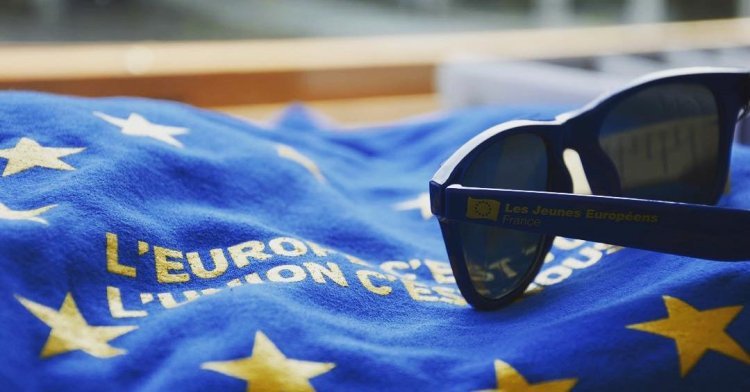If humanitarian intervention is, indeed, an unacceptable assault on sovereignty, how should we respond to Rwanda, to Srebrenica — to gross and systematic violations of human rights that offend every precept of our common humanity?
Then U.N. Secretary-General Kofi Annan, 2000
The French-British-USA and allied “confederation of the willing” air-and-sea strikes in Libya in March 2011 is the first major action in the spirit of the Responsibility to Protect —R2P to its friends. During the 1990s, there had been a good deal of discussion among both governments and non-governmental organizations (NGOs) concerning “the right or the duty of humanitarian intervention.” The concept had been developed by Bernard Kouchner who had been an NGO activist and later a French government Minister. The term itself seems to have been first used by the French-Romanian writer Eugene Ionesco.
The often heated discussions which follow Kouchner’s proposals led the Government of Canada to establish a multi-national “International Commission on Intervention and State Sovereignty” which released its report The Responsibility to Protect in December 2001 [1]
The findings of the Report were largely accepted by the United Nations in a world summit in September 2005 [2]. The central tenet of the Responsibility to Protect is that each state has a responsibility to protect its citizens from mass killings, genocide, ethnic cleansing and mass crimes. However, if the State is unable or unwilling to carry out that function, the responsibility to protect falls to the international community — basically to the United Nations which is the organized expression of the international community.
The Responsibility to Protect encompasses three distinct components: 1) the responsibility to prevent; 2) the responsibility to react, 3) the responsibility to rebuild.
The international community has the responsibility to take action to protect the rights of those affected by internal strife, especially the right to freedom from arbitrary killing, torture, and large scale loss of life, actual or apprehended. The Responsibility to Protect is an important step toward a cosmopolitan, constitutional legal order which replaces the older framework of international law often based on territorial integrity and non-intervention.
It is still early to know how the intervention in Libya will develop. At this time, when the people’s revolution is sweeping through the Arab lands, the reality is that interventions may not be able to be mounted in every case where there is justification for doing so. Nevertheless, this is no reason for an intervention not to be mounted.
The real issue in Libya is to move to an agreed-upon end to the fighting and to open the door to the necessary constitutional restructuring of the country and the creation of a broadly-based new Libyan Republic.
Following the nonviolent people’s revolution in Tunisia and Egypt, protests against the political and economic functioning of Libya began. Rather than starting a dialogue, the Libyan authorities undertook a policy of repression, leading to the large-scale armed violence we see today, provoking a massive flow of foreign workers to leave the country and to the internal displacement of many Libyans.
Only a ceasefire will allow the start of dealing with the fundamental constitutional issues which have faced the country since its Independence. At Independence in 1951, authority rested with King Sayyid Idris as Sanoussi (1890-1983), the leader of an important Islamic brotherhood who remained more concerned with religious reforms than with the structure of the government and the quality of the administration. His government had some decentralized, federalist aspects but was largely based on pre-existing tribal confederations [3].
When the military officers led by Colonel Moammar Qaddafi took power in a coup in September 1969, there was for a short time some discussion as to the forms of government that they would develop. There was agreement on a greater centralization of power, as well as keeping to the religious policies of the former King and the Sanoussi Brotherhood — what has been called neo-salafyisme. However, in order not to put obstacles in the way of future Arab unity, no constitutionally-agreed upon State structures were officially created.
Colonel Qaddafi wanted to do away with parliamentary government and representational elections in favour of people’s committees, a people’s congress, and revolutionary committees, all held together by the ideological assumptions of his Third Universal Theory — a concept that embodies anti-imperialism, Arab unity, Islamic socialism and direct popular democracy [4]).
Disagreements on the nature of the State had led to important divisions among the ruling circle, especially in 1975. However, all open discussions on the nature of the State, of the relation between State and society, of the place of the tribes and of religious brotherhoods were considered subversive — in fact treason. In practice, but not in theory, decision-making was in the hands of Colonel Qaddafi, his family, friends and tribal allies [5].
In the short term, negotiations after a ceasefire may lead to a continued role in the Libyan power structure of Colonel Qaddafi, his sons and allies. However, the degree of violence is clear evidence that the structure of the State does not function, that whatever its faults, a parliament allows some of the demands of the people to be heard and creates limits on the exercise of power.
Historically in Libya, there were sixteen marabtin tribes renowned for their religious wisdom who served as mediators and arbiters within the political structures of tribal, pre-colonial Libya. The tradition of reconciliatory mediation may still exist, and traditional avenues of mediation should be explored.
A ceasefire must be a first step, and the United Nations the most appropriate institution for maintaining a ceasefire while constitutional discussions start.

Follow the comments: |
|
